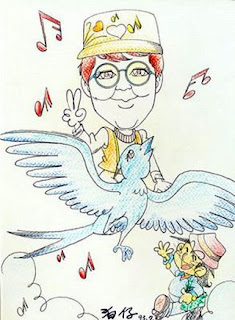Jo Freeman
The American people are angry. They have shown it by voting against the party in power three elections in a row. In 2006 and 2008 they voted against the Republicans. In 2010 they voted against the Democrats and did so overwhelmingly. This switch resulted in one of the largest midterm loss of seats in the House in US history.
People were angry for different reasons in different years. In 2006 they were angry about the war. In 2008 it was about the crash. In 2010 it was the economy – or more specifically that it hasn't recovered fast enough from the crash.
From the early studies of the exit polls, the people who voted in these three elections were also different. The electorate which voted in 2010 was two-thirds that of 2008, and drew more heavily from the Republican base. It was older, whiter, and more conservative than in 2008.
There were some shifts. Many independents who voted Democratic in the last two elections voted Republican in this one. The overall gender gap – women's preference for Democrats – was larger than in 2008 or 2006. Women as well as men were more likely to vote Republican in 2010 but did not shift party preference as much as men did. However, the size of the gender gap varied widely with each contest. ranging from four to nineteen percent, implying that local factors were very important in determining which party men and women preferred.
Despite some shifts in how different groups voted, for the most part Republicans won in 2010 because large numbers of the Democratic base stayed home while those in the Republican base voted in droves.
What does this mean for women?
Not only are there ten million more women than men registered to vote, but women turn out to vote at higher rates than men. This is true for every racial/ethnic group for which data are available. This difference has sometimes given the Democratic candidate a winning edge. Expect the Republicans to try to suppress the female vote through such techniques as negative advertising, which tend discourage voting.
There is still no evidence that women voters favor women candidates regardless of party. In California, where two high-profile Republican women faced two high-profile Democrats, one male and one female, five percent more women than men chose the Democrat in both races. Don't expect the Republican Party to run more women in the belief that it will chip away at the Democratic base.
More women may run in Republican primaries, breaking the 2010 record of 128 filing for the House. But the fact that only 47 of those Republican women won their party's nomination means that the door of opportunity is not as open for Republican women as it is for Democratic women. There is still a "party gap."
The "party gap" means not only that there continues to be a smaller percentage of women in the Republican Conference than in the Democratic Caucus (9 percent compared to 25 percent in the House), but that there will be few if any women in the Republican leadership. This has implications for the policies the leadership will prioritize.
Even though women voters don't give preference to women candidates, the fact that the gender gap varies widely from race to race in every election means that candidate characteristics and appeals do matter. Republicans can cut into the Democratic advantage with women by the policies they propound and their willingness to address women's issues.
But they probably won't do this. The "extremes" in both parties are more likely to vote in party primaries and conventions where the candidates are chosen. By and large right-wing Republicans don't support policies favored by most women.
Despite all the publicity on the emergence of conservative women as candidates, the final results saw a drop in the number of women in Congress. This is not a first. The number of women in Congress has dropped nine times since the first woman was elected in 1916. Progress always resumes, though not always in the next election. Women also lost ground in the state legislatures, and not for the first time. All the 2010 drop means is that women still have an easier time being elected as Democrats than as Republicans and the Republican sweep knocked out a lot of Democratic women.
The Speakership has also shifted between the parties frequently in the past – four times between 1947 and 1955. So don't assume that Nancy Pelosi – the first woman Speaker and one of the most effective ever – is permanently out just because the Democrats are down.
Redistricting will make the 2012 election a whole new ball game. Ironically, new districts drawn by newly Republican legislatures will be harder for the Democrats to win, but should create new openings for women.


遊民畫家泊仔送的畫像,在左圖中白鳥的右下方,就是他自己。
我想我是一個認真的人,有時候到了嚴肅的地步。還記得剛入小學的第一課就是ㄅㄆㄇㄈ,老師說下週要考,可是一週過去了,我還沒全學會,急得不得了,回家就發燒了,媽媽還得幫我惡補。下星期老師竟然完全忘了考試這回事!而我至今餘悸猶存。
最近一位好友退休,她在嚴肅這件事上比我更勝一籌,在我們為她舉行的餐會中一絲不苟地討論未來生活的意義,我勸她不必急,不妨先混一混。李豐(寫《我賺了四十年》的那位台大醫師)在電話上聽了我的轉述,大笑道:「你混得怎樣?」我說:「不錯啊!」她卻不以為然:「我聽妳聲音就知道妳還是那樣,說話太快了!」幾十年來她一直勸我慢下來。慢才能品味生活,才能靜攬人生,才能修鍊身心。
不僅需要調整步調,我也想改變自己的寫作風格,輕鬆一點,閒適一點,更多一點生活,多一點感覺。渴望有自己的部落格,不被字數、時尚、市場、刊物風格、主編好惡綁住。大部分是為自己寫吧,也為了分享,至於未來,就交給上天了。
email: yenlinku@mail2000.com.tw
2010-11-13
訂閱:
張貼留言 (Atom)






沒有留言:
張貼留言